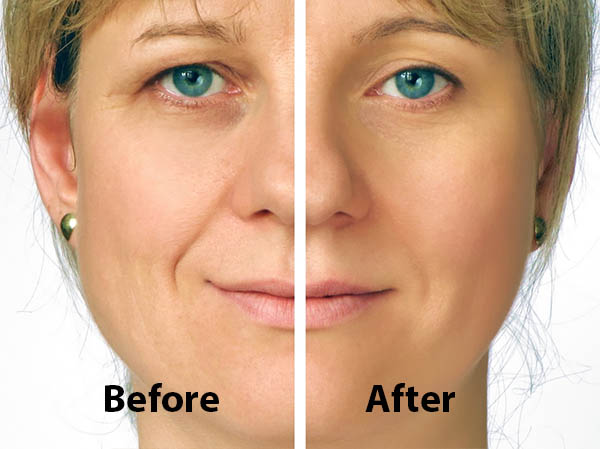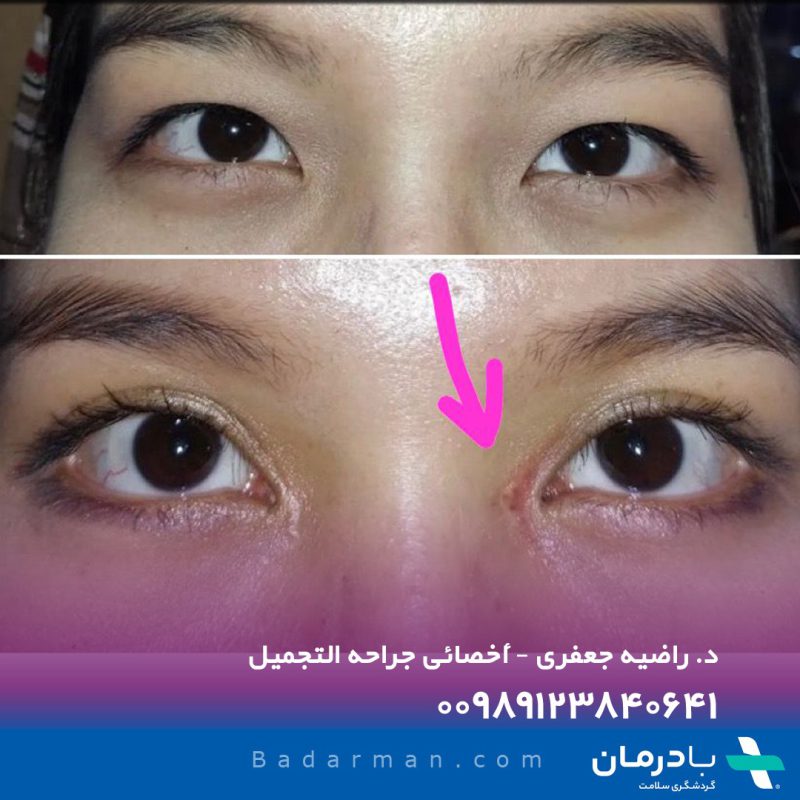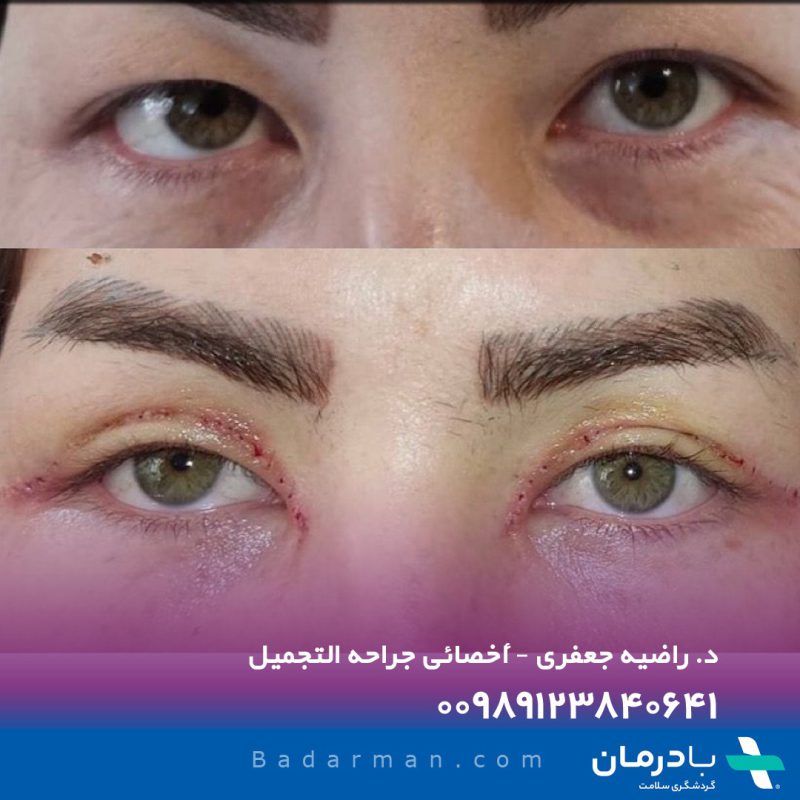blepharoplasty in Iran
blepharoplasty in Iran , also known as eyelid surgery in Iran, is a cosmetic surgical procedure that aims to rejuvenate the appearance of the eyes by removing excess skin, fat, and sometimes muscle from the upper and/or lower eyelids. This procedure can help improve the appearance of droopy or sagging eyelids, reduce puffiness or bags under the eyes, and correct uneven eyelids. blepharoplasty in Iran can be performed for aesthetic reasons or for functional reasons, such as improving vision that may be impaired by excess skin.
Cost of blepharoplasty in Iran
|
blepharoplasty in Iran |
The cost of surgery | Duration of stay in Iran |
|
Upper eyelid surgery in Iran cost |
500 $ |
4 days |
| Lower eyelid surgery in Iran cost | 700 $ |
4 days |
The procedure is typically performed by a plastic surgeon or an ophthalmologist who specializes in cosmetic and reconstructive surgery of the eyelids and surrounding structures. There are several techniques for performing blepharoplasty in Iran, including:
1. Upper eyelid surgery in Iran: This involves making an incision along the natural crease of the upper eyelid, removing excess skin, fat, and sometimes muscle, and then suturing the incision closed.
2. Lower eyelid surgery in Iran: In this procedure, an incision is made either just below the lower lash line or inside the lower eyelid, through which excess skin and fat are removed or repositioned to improve the appearance of the lower eyelid.
3. Transconjunctival blepharoplasty: This technique is typically used for lower eyelid surgery in Iran , where the incision is made inside the lower lid, leaving no visible scar. This is often done when there is no excess skin to remove but only fat pockets need to be addressed.
4. Laser-assisted blepharoplasty: In this approach, a laser is used instead of a scalpel to make incisions and remove excess skin and fat. This can result in less bleeding, swelling, and bruising, and a quicker recovery time.
After the procedure, patients may experience some swelling, bruising, and discomfort, which can be managed with ice packs, pain medication, and keeping the head elevated. Recovery time can vary depending on the individual and the extent of the surgery, but most patients can return to their normal activities within one to two weeks.
As with any surgery, there are potential risks and complications associated with blepharoplasty, including infection, bleeding, dry eyes, difficulty closing the eyes, and scarring. It’s essential to discuss your goals and expectations with a qualified surgeon who can help you determine if blepharoplasty is the right option for you.
Eyelid Surgery Procedure Steps
Eyelid surgery, or blepharoplasty, is a procedure to remove excess skin and fat from the upper and lower eyelids. It is often done for cosmetic reasons, to improve the appearance of sagging or drooping eyelids, but it can also be done for medical reasons, such as to improve vision loss from excess eyelid skin.
The eyelid surgery procedure typically involves the following steps:
1. Anesthesia – Local anesthesia with sedation or general anesthesia is administered to numb the area and prevent pain during surgery.
2. Incisions – The surgeon makes incisions in the natural skin creases of the upper eyelids and below the lash line of the lower eyelids. Excess fat and skin can then be removed through these incisions.
3. Removing excess tissue – Using a scalpel, laser, or radiofrequency energy, the surgeon removes excess skin, muscle and fat from the eyelids. The amount removed depends on your specific needs and desired results. For the upper eyelids, a thin strip of Orbicularis oculi muscle may also be removed.
4. Reshaping the eyelids – The underlying eyelid tissues and muscles are reshaped and tightened as needed. The incisions are then closed with stitches.
5. Closing the incisions – The incisions are closed with tiny sutures that run along the natural creases of the eyelids for the best possible scarring. Steri-Strips or sutures may also be used for the lower eyelid incisions.
6. Applying dressings – Antibiotic ointment and eye pads or bandages are applied after surgery to help with healing and prevent infection. Cold compresses may also be applied to reduce swelling.
7. Follow up – Stitches are usually removed 3-5 days after surgery. Bruising and swelling continue to improve over the following weeks. Most people can return to light daily activities after about a week and return to normal activities in 2-3 weeks. Final results are visible once all residual swelling has resolved after several months.
The procedure typically takes 1 to 3 hours depending on the extent of correction needed. The recovery period lasts several weeks to months.
duration of stay of blepharoplasty in Iran
In this surgery , excess skin and fat are removed and tissues and skin are strengthened
- This surgery is performed under local anesthesia
- Preoperative procedures are described in 6 steps you should take before plastic surgery in Iran
- The duration of this surgery is between one to two hours
- Do not forget to apply antibiotic ointment on the suture and take antibiotic capsules until one week later.
- Use painkillers prescribed by your doctor to reduce pain
- The first few days of ice packs and keeping the head up helps to improve swelling and bruising, and when sleeping with two pillows
Steps of upper eyelid surgery in iran

- Your eyelid surgeon will visit you
- Explain about your eyelids and tell your doctor what you expect
- Explain to your surgeon about the illnesses and medications you are taking
- Your doctor will order a blood test, a photo from the lab and a heart doctor
- It is surgery day
- Do not eat or drink for 8 hours before the operation
- Give the blood test results and a photo of the lab and heart doctor to the surgeon
- You will be released 3 hours after the operation
- Putting ice on the face for up to 3 days reduces swelling and bruising
- Apply antibiotic ointment on the stitches and take antibiotic pills
- This operation does not cause much pain
- The bruise is removed a week later
- Second session with the surgeon
- The surgeon examines the sutures and gives the necessary instructions
- You can return to your home country after this meeting
Recovery After Eyelid Surgery in Iran (Blepharoplasty)
Here are some important blepharoplasty in Iran aftercare tips:
• Apply ice or cold compresses to the eyes for 10-15 minutes at a time, a few times a day to help reduce swelling. Do this for the first 1-2 days.
• Keep your head elevated and rest as much as possible. Avoid any strenuous activity or exercise.
• Use the eye ointment or eye drops as prescribed by your doctor to help with healing and prevent infection.
• Take pain medication as recommended by your doctor to manage any discomfort.
• Keep the eyes lubricated with eye drops for dry eyes. This helps with irritation from surgery and drying of the eyes.
• Avoid rubbing your eyes. Do not touch or rub the incision lines.
• Apply warm compresses after the first 2 days to help reduce bruising. Do this a few times a day until the bruising improves.
• Avoid any makeup or contact lenses around the eyes during the recovery period. Give your eyes adequate time to heal as directed by your doctor.
• Attend all follow up visits with your surgeon. They will monitor your healing and check for any signs of infection or complications.
• Avoid sun exposure, tanning beds and sun lamps while recovering. Too much sun can cause irritation and damage healing eyelid tissues.
• Do not drive until you are given approval by your doctor. Driving too soon can affect your vision and medication can also impair your driving.
• Gently clean any crusting from the eyelids and eyelashes with a washcloth and warm water. Avoid pulling on your eyelids.
• Call your doctor right away if you notice signs of infection like increased pain, redness, swelling, or pus, or if you have troublesome bleeding.
Most people recover from blepharoplasty in Iran in 7 to 14 days. Be sure to get adequate rest and allow your body time to heal for the best results. Following all aftercare instructions from your doctor is key to proper healing and a successful outcome.
How long does it take to see the final results of the surgery?
It can take several months to see the final results after blepharoplasty in Iran. This is because there is usually swelling and bruising immediately after the procedure that needs time to resolve.
Typically, here is the timeline for seeing results:
• Within the first week after surgery, much of the swelling and bruising will have improved, but the eyelids will still appear swollen and the incisions will be visible. There may be some irritation or dry eyes as well during the first week.
• After 2 weeks, sutures are removed and swelling continues to go down. The eyelids will start to look more natural in shape, but still be slightly swollen. Bruising should be minimal at this point. Patients can usually return to work or normal daily activities after suture removal if they feel up to it.
• After 1 month, a majority of the swelling will have subsided and the eyelids will appear smoother and tighter. Incision lines continue to fade and thin out. Patients can usually apply makeup at this point to help camouflage any remaining bruising.
• After 2 to 3 months, the residual swelling should be resolved and the final results become visible. The eyelids appear rejuvenated and the incision lines have faded significantly. Patients can see the real effects of the eyelid lift at this point.
• Subtle improvements in the scar appearance and tightness of eyelid tissues can continue for up to 6 months to a year after surgery as the healing process completes.
While a good portion of the recovery is during the first month, it really takes at least 2 to 3 months to appreciate the final cosmetic outcome and improvements from blepharoplasty in Iran. Patients need to be patient during this time and understand that the swelling will make the eyes look different until it has all resolved over time. The end results are worth the wait, but it is a gradual process.
blepharoplasty in Iran




